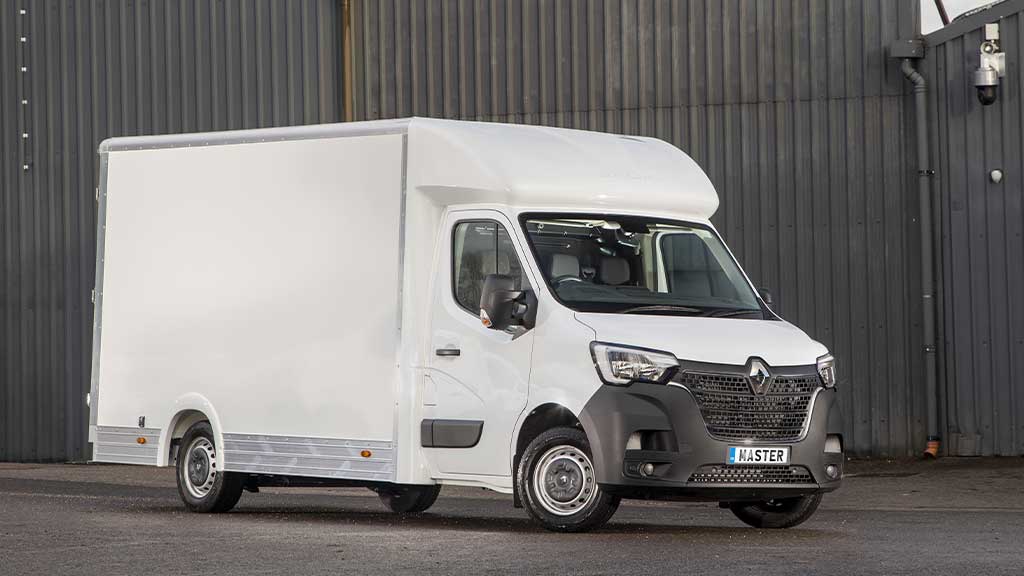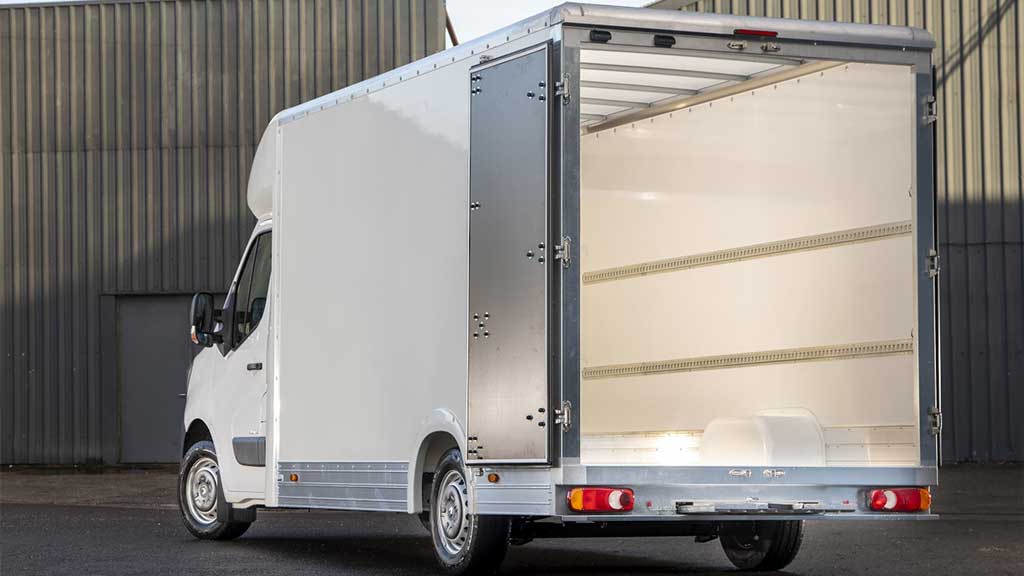A Luton van is among the few cars that are as effective at moving cargo as possible. Because Luton vans are roomier than smaller panel vans, they are appropriate for moving heavy items like appliances and furniture. But you should be aware that the size of the Luton van is important. Choosing any vehicle is insufficient; you must also look at Luton van measurements. Website
Several manufacturers offer Luton box vans in a variety of dimensions. These cars’ distinctive styling and large cargo capacity also contribute to their continued popularity. Everything you need to know about Luton van measurements or dimensions—including the several types and things to consider when making your choice—will be covered in this article.
What is a Luton Vans For Sale?
A huge box is installed on the back of a Luton van, which has a long wheelbase. With their hydraulic tail lifts, which come in handy when attempting to transport heavy goods like pianos, freezers, and a variety of domestic or industrial equipment, they are excellent movers for large loads.
Load securing straps and other tiny, light objects can be stored in the body’s Luton section. The loading area provided by the rear doors is typically 1900 × 1800 mm (l x H), and a 3.5-ton box van can carry between 1000 and 1200 kg of cargo.
The Citroen Luton is an illustration of a Luton van. It extends the front of the body using the area above the cab, providing a large volume capacity, completely enclosed bodywork, and helpful extra storage space.
One of the most crucial considerations when choosing a Luton is wheelbase length, which is the length of the axles at the front and rear. This affects the vehicle’s overall dimensions. A longer wheelbase enables manufacturers to mount a larger Luton body on the car’s frame. The van’s size is determined by several factors besides its wheelbase. Both the Luton body’s size and the cab’s design are significant.
Understanding Luton Van Measurements
Luton Van Width

The outer width of a Luton van measures 2,140 mm (84.25 inches), while the interior width measures 2,082 mm (81.96 inches). This is only the typical width; therefore, the actual Luton van measurements may vary significantly depending on whether you buy or rent one. In addition to its dimensions, a vehicle’s payload influences how much cargo it can transport.
Luton Van Height
When measured from the outside, a Luton van measures 3,169 mm (124.76 inches) tall on average. But typically, there is less loading room. A Luton measures 2,255 mm (88.77 inches) in its interior height. But remember that this is merely an average, and the precise height of whatever Luton you purchase will depend on the model.
Luton Van Length
The average internal length of a Luton van is 4,082 mm (160.7 inches), and the total length is 6,746 mm (265.59 inches). Yet, the model of the car you’ll acquire from a van rental provider may affect its length.
An example of a vehicle with these Luton van measurements is a Ford Transit, which measures 4,000 mm (157.4 inches) inside and 6,500 mm (255.9 inches). An internal length of 4,100 mm (161.4 inches) and an external length of 6,767 mm (266.4 inches) characterize a Renault Master in comparison.
Luton Van Size
A Luton van is comparable in size to a shipping container with an average external volume of 40 m3 and an internal volume of 18.79 m3. The vehicle’s average external measurements are 2,140 mm (84.25 inches) in width, 3,169 mm (124.76 inches) in height, and 6,746 mm (265.59 inches) in length. Luton’s loading area measures 2,082 mm (81.96 inches) in width, 2,255 mm (88.77 inches) in height, and 4,082 mm (160.7 inches) in length.
How to Determine the Required Van Size?
The following variables must all be calculated and considered to determine your Luton van measurements.
- The equipment you routinely handle, including ladders, and its length, height, and width
- The breadth, height, and length of the job supplies or items you frequently move (such as concrete slabs, plants, and wood planks)
- Is it necessary for your van to have the capacity to occasionally transport that extra-large piece of equipment or extra supplies for the work, or would it make more sense to hire a trailer or another kind of transportation on occasion?
- The amount of space you require to operate comfortably (if you work out of your van)
- Whether your space requirements will alter soon, and if so, how (for example, will your company require more or greater supplies or equipment due to larger contracts)?
- If there are any location-specific height constraints (we’ll talk about them briefly), consider things like limited city parking spaces, low headroom, and height restrictions in parking lots.
Understanding the maximum height, length, and breadth of the van you want can help you choose the body type and dimensions that work best for you.
Calculating Volume Capacity
One of the most crucial factors to consider when renting a van is cargo capacity. Because of their size, extra storage capacity above the passenger cabin, and easy driving requirements, Luton vans are viewed by many as the ideal vehicles for transporting freight. However, what is the precise capacity of a Luton van, and how much goods can it hold?
Measuring the cargo compartment of a Luton van is the most accurate method of determining its maximum load volume capacity. To calculate the overall interior volume of the cargo area, multiply the internal length, width, and internal height.
Let’s use a Luton van as an example. Its dimensions are 4.1 m in length, 2.1 m in width, and 2.2 m in height, totaling 18.94 m3 (4.1 m x 2.1 m x 2.2 m). Consequently, this vehicle has an 18.94 m3 load volume capacity.
A Luton van’s capacity is determined by several variables, including its size, weight, and design. Knowing your rental car’s precise Luton van capacity lowers your chance of collisions and helps you stay within weight restrictions.
How to know a Van Dimension?
If you have ever built your own camper, planned for van racking, or just intended to purchase a van for any of these uses, you must be aware of how challenging it is to locate dimensions, such as the breadth of the load area.
Visit the manufacturer’s website
It would help if you always started with the most recent model (five years old). The latest models are always highlighted on the manufacturer’s website, and the manufacturer ALWAYS provides the most detailed specifications. Find your model on the manufacturer’s website and click the “Brochure” link. Most of the information about the car is downloadable as a PDF.
Make use of the converting guide
A brochure may only sometimes be available when looking for Luton van measurements. Alternatively, some information might be missing; for instance, you might be shocked to see that the manufacturer doesn’t state the internal width.
In such instances, you should seek out the conversion handbook, a comprehensive guide spanning over a hundred pages for experts who intend to outfit their van or expert camper builders. Most of the time, this handbook is quite clear and comprehensive. However, it’s limited to cargo and compact panel vans and is only compatible with more recent versions of vehicles.
Look at the websites of the nearby dealers
Once you are certain that the manufacturer is not the source of the information, you can visit the website of your nearby dealers. You will notice that most regional businesses also offer older models for sale and occasionally offer comprehensive details. However, be sure the model year is correct.
Ask professionals and owners
If you cannot locate your vehicle’s specifications using any of the methods, what should you do? Never fear. The owners’ clubs of most classic vehicles typically have forums. Many excited and helpful car owners may be found on the forum. Someone will always measure their vehicle for you if you ask politely.
Importance of Luton Van Measurements – Cargo Van Dimension
Since the belt is the vehicle’s widest point, most van manufacturers gauge the interior cargo area’s measurements. To determine the total dimensions of the cargo space, you must account for the space lost by the wheel arches.
For delivery companies, interior measurements may matter. You must check the van’s measurements to determine whether the items you transport will fit inside. It’s also important to consider payload.
The payload increases with the size of the van. However, larger vans aren’t always more economical because they consume more gasoline. Most delivery services and maintenance providers prefer medium-sized vans, which offer greater capacity at a lower operating cost.
The features and configuration of a cargo van will affect the final cost. When determining the dimensions of a vehicle, consider the typical dimensions of a cargo van. This will enable you to ascertain the point at which you’re operating and purchasing expenses support your prospective revenue.
Conclusion
There has yet to be a definitive answer regarding Luton van measurements and size. The model and manufacturer of a Luton van determine its specific dimensions. Still, most Luton vans differ in size by only a few inches. The van’s payload should also be considered, as it affects the amount of cargo it can transport.




